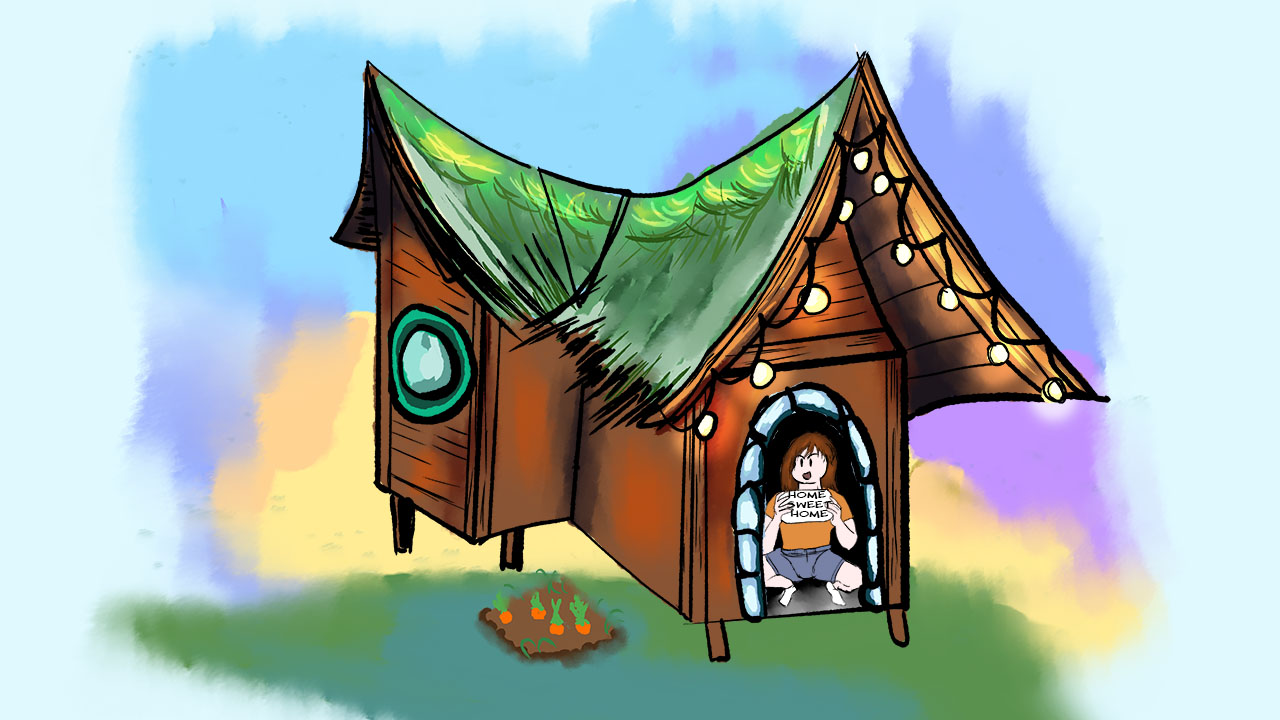Homes in a box: Are foldable homes viable and sustainable?
 CREDIT: CALEIGH REID
CREDIT: CALEIGH REIDFoldable homes are the hot new thing on TikTok, but do they have the legs to solve our need for affordable housing?
For just $20,000 and a $5 shipping fee, you can unfold your dream home.
A recent trend on TikTok shows many young adults purchasing mobile, foldable homes off Amazon and turning them into livable spaces as a cheaper alternative to buying a home or renting an apartment. But is this really a viable option?
The concept of shippable homes has been around since the start of the 20th century, starting as pre-cut homes made from wood, typically sold at lumber mills. These homes were shown in catalogues where people could pick out the model, have them shipped to them in a week, and then assembled like a giant Lego set.
In the modern era, the concept is somewhat similar, except instead of assembling it piece by piece, your home is unfolded from a rectangle and set into place just after a few hours. The average size of these homes is around 400 sq ft to 600 sq ft, which is roughly the size of a studio apartment. Most come with a fully equipped bathroom and half-kitchen, alongside electric and water.
If that all sounds too good to be true, that’s because it might be.
Of course, it’s an amazing opportunity to be able to own your own space, but finding a plot of land to place it makes it questionable.
Ken Judge, an economics professor from Fanshawe, said there are many pros and cons to living out of these mobile structures but that buying one must be thought out with logic.
“It all depends on what your situation is,” Judge said. “If you have a small home and you’re going to invest, I would think more long-term and decide whether or not something on that side is going to be attainable or comfortable for you to live in because as a first-time home buyer, you don’t know how long you’re going to stay there.”
People need to consider what their future entails and where path in life they’re seeking. Homes are investments and so are families when it comes to aspects of personal growth.
These foldable dwellings make a great living quarter out of a condensed small space for a fraction of the price of a larger-sized home. But how much does someone need to make to maintain and upkeep these structures as time passes? Judge said it’s necessary to consider the maintenance costs of these homes if saving for the future is important to you.
“If you’re looking just to be cost-effective then yes, it would probably work and fit within your budget and from another standpoint, it could allow you to start saving towards your dream house,” Judge said.
Once your foldable home has fulfilled its purpose in your life, how do you move on and make a financial return on an investment? If a trend like this grows exponentially, then that may lead to a surplus of container homes that no one will know how to get rid of.
“Is there a market for it? For sure,” Judge said. “However, you have to do your homework. What’s the duration? Is it going to take off and be a part of the market? I don’t see these things doing that, so the recyclability of something like that might be very difficult and you might take a big loss on it.”
These mobile homes can be seen as both a blessing and a curse depending on the situation at hand. They can be beneficial, both financially and in terms of livability, but it all depends on what your plans pan out to be.

















